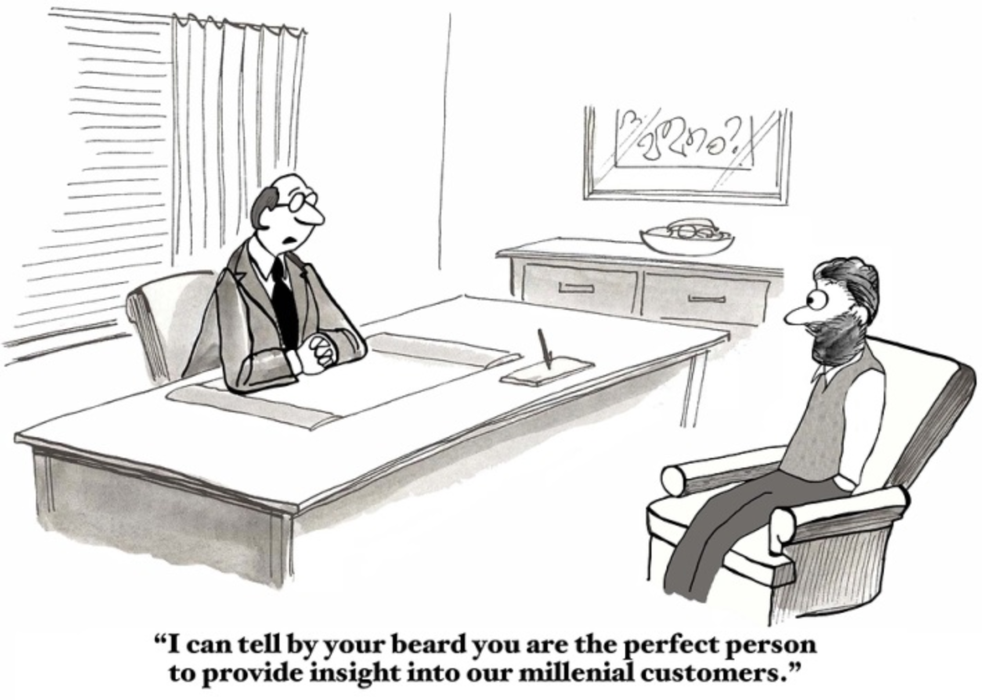Loyalty is hard to earn. The good news, however, is that it’s even harder to break. That’s why most every marketing team wants to earn that undying devotion from their key target customers. And for many companies that coveted group is millennials. “Millennials are motivated to continue shopping with a given brand if they feel appreciated and valued,” says Danielle Brown, VP of marketing at Points, a platform designed to build consumer loyalty. “There are more and more options competing for their spending power every day. It’s important to connect with them on a more specific and personal level.”
Brown says that establishing that one-to-one connection—through methods like thank you emails, rewards, and acknowledgement of customer feedback—is the best way to build a loyal customer base with this coming-of-age generation. In this lucid Q&A, Brown takes a deeper dive into what motivates a millennial shopper, shares how to stay top-of-mind among Gen Y, and reveals why millennials, indeed, can be hard to win over.
What makes a millennial loyal to a brand?
I would say quality of products, price, and consumer experience all contribute to millennial loyalty. When it comes to consumer experience specifically, millennials tend to return to retailers and other brands that show appreciation through special offers for repeat purchases and other incentives for brand advocacy. Convenience is also important.
What’s the best way to connect with a millennial consumer?
Millennials, like most everyone else, are constantly connected to their mobile devices and consider them an integral part of the shopping experience. Marketers looking to target millennials need to engage them where they are—the touch screen that’s at their fingertips. We need to make it easy for millennials to fit into their habits and patterns.
How can marketers motivate millennials?
Work to turn them into brand ambassadors. Rather than ending the customer interaction at the time of the transaction, keep your brand top-of-mind next time millennial consumers are shopping.
How do loyalty programs boost affinity for a brand—especially among millennials?
Millennials are known as a sharing generation, and if they have an overwhelmingly positive or negative experience, they are likely to share it with their friends and family face-to-face or through social media. A handful of early adopters have the power to share their positive experiences and boost the overall affinity for your brand’s loyalty program—but conversely millennials can have the opposite effect too. It’s important to remember that millennials are savvy, and know when they’re being sold a product or service. So be upfront and honest; acknowledge and appreciate the good and the bad about your company.
Why do you think that adding a mobile element to a loyalty marketing program might encourage millennials to engage more with a brand?
Millennials want to engage with brands in the most convenient way possible, which in most cases means through their mobile devices. If you target millennials, they likely won’t take the time to fill out written forms to sign up for a physical loyalty card, although many of us won’t anymore. And if you ask for feedback through email, millennials ignore much of it—mainly because they opt in to so many retail newsletters. With a mobile element to your loyalty program, you can easily attract them with push notifications or ask customers for simple feedback, such as a quick star rating.
Are millennials a hard group to win over?
Millennials can be a hard group to win over simply because they have so many options at the tips of their fingers. They don’t necessarily need to maintain loyalty to a given clothing store, restaurant, or other brand when so many options are available. If they’re even in the least bit dissatisfied with the customer experience of a brand or are looking to try something, they won’t hesitate to turn to another brand. Understand that you may not have done anything to turn them off; someone else may have just worked harder to turn them on.
How might a loyalty program with a mobile element help break through those barriers?
With millennials who are constantly connected, a mobile loyalty program can engage millennials exactly where they are—with their devices. A mobile loyalty program needs to speak to their on-demand, technology-driven lifestyles.
Gamification is another way to make your loyalty program attractive to millennials. Game-like incentives make loyalty less about selling and more about entertainment. Adding in a social platform where users can challenge each other and race to earn badges also speaks to millennials, and it also significantly helps to organically grow a fan base. Physical loyalty cards are likely to collect dust in a customer’s wallet, while mobile loyalty programs enable you to continue winning over your target customers.
Is there ever a time that a mobile-centered loyalty program is not the best strategy to connect with millennials?
While millennials are an inherently mobile generation, every audience needs a variety of ways to engage with their loyalty programs across multiple channels. More opportunities and ways to earn and burn those loyalty points mean greater convenience for the consumer and more opportunities for you to connect.








